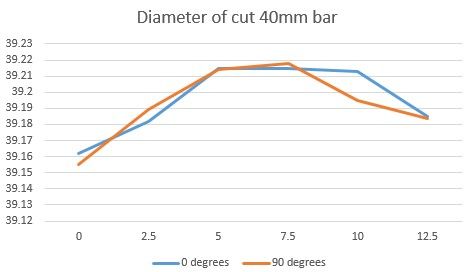So I got out to the lathe today and tried to follow the instructions above.
My first comment is that I found it very difficult to get repeatable readings Just leaning on the bench would shift the level bubble noticeably!
Using the feet on the base I was able to get the head end more or less level (within 2 microns on the level).
I then ran along the bed and got readings like this. Note +/- infinity means off scale, + being front of the bed higher, -negative back is higher. distances are from starting point near headstock to tailstock in cm. numbers are in microns (approx).
0 : 0
5 : -∞
10 : -∞
15 : +4
20 : +∞
25 : +∞
30 : +∞
35 : ∞
To get some idea of how far out the bed is, I tried using some shims to prop up one end of the level or another. Unfortunately my smallest shim (0.05mm or 2 thou) is too large. I then tried some aluminium foil which seems to run between 15 and 20 microns in thickness. This is where I struggled with repeatability. Sometimes one thickness would reverse from +∞ to -∞ and sometimes two thicknesses didn't quite get it to zero.
Which was frustrating. I then ran down the length of the bed (at my stopping points above) to see how much foil was needed to correct the angle. Broadly I found that at all the ∞ points one or two thicknesses of foil was enough to get the level around zero or to at least reverse the direction of tilt.
Long and short of that, assuming I've not been an idiot (rash assumption that) is that a) the twist is not linear along the bed and (more important) the shim needed to correct the twist at the tailstock end is likely to be around 20 microns, but quite possibly less.
The level is 100mm and the mounting feet of the lathe bed are on 70mm centres,
Any suggestions (as always) most welcome.
Iain
Benedict White.


 .
.


